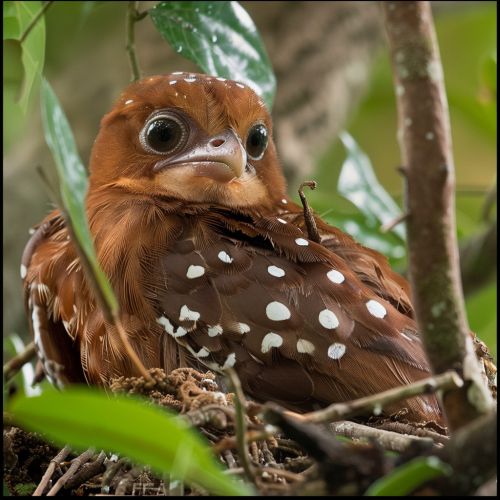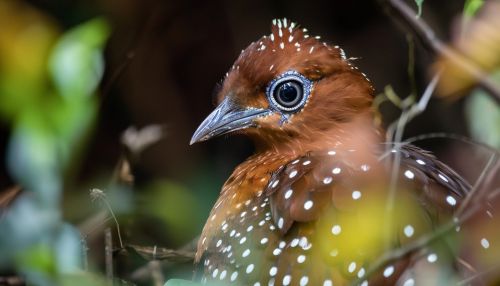Oilbird
Taxonomy and Evolution
The Oilbird, also known as Steatornis caripensis, is a bird species that belongs to the order Caprimulgiformes and the family Steatornithidae. This family is monotypic, meaning that the Oilbird is the only species within it. The Oilbird's evolutionary history is unique and has been the subject of extensive scientific research.
Description
The Oilbird is a medium-sized bird, with adults typically reaching lengths of 40 to 49 centimeters and weights of 350 to 475 grams. It is characterized by its long, pointed wings, which span approximately 95 centimeters when fully extended. The bird's plumage is primarily a rich, chestnut-brown color, with white spots and streaks adorning the wings and tail. The Oilbird's beak is short and hooked, and its eyes are large and adapted for nocturnal vision.


Distribution and Habitat
The Oilbird is native to the northern regions of South America, including Venezuela, Colombia, Ecuador, Peru, Bolivia, and the island of Trinidad. It inhabits the montane forests of the Andes and the coastal ranges, typically at elevations between 200 and 2400 meters. The Oilbird is a cave-dwelling species and is known to roost in large colonies within deep, dark caves.
Behavior
The Oilbird is a nocturnal species, active primarily during the night. It spends its days roosting in caves and emerges at dusk to forage for food. The Oilbird is also known for its unique navigational abilities. It is one of the few bird species that use echolocation, a method typically associated with bats. By emitting a series of sharp clicks and listening to the echoes, the Oilbird can navigate its way through the pitch-black caves in which it dwells.
Diet
The Oilbird has a highly specialized diet, feeding almost exclusively on the fruits of the Oil Palm and other tropical trees. It is one of the few bird species that can digest the fruit's oily pulp, which provides the bird with a high-energy diet. This dietary specialization has led to the Oilbird's common name, as well as its scientific name, Steatornis, which translates to "fat bird".
Reproduction
The Oilbird's breeding season typically begins in November and continues until June. The female Oilbird lays one to four white eggs in a nest constructed on a ledge within a cave. Both parents participate in incubating the eggs, which hatch after a period of approximately 33 days. The chicks are altricial, meaning they are born blind and helpless, and require extensive parental care.
Conservation Status
The Oilbird is currently listed as Least Concern on the IUCN Red List. However, the species faces several threats, including habitat loss due to deforestation and disturbance of roosting sites by human activities. Conservation efforts are ongoing to protect the Oilbird and its unique habitat.
